What Leather Really Looks Like
The gross and gruesome reality behind shiny new leather shoes...
Leather looks nothing like a cow does. So how does an animal like Storm’s skin become a boot? Here’s a look into just some of the processes.
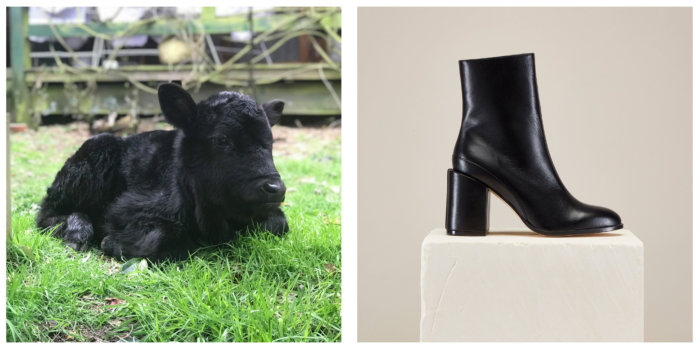
1 Breeding
Cows are forcibly impregnated by having semen forced into their vagina. The semen is extracted from a restrained bull who has a probe forced into his anus during ‘electro-ejaculation’.
Sources:
Agriculture Western Australia
Dairy Australia
2 Birth
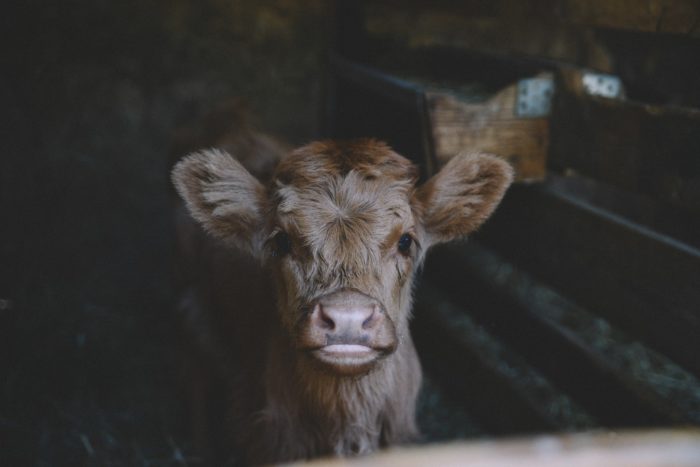
A baby cow is born into the world. Completely innocent, he or she has no idea what lies ahead…
3 Painful Standard Practices
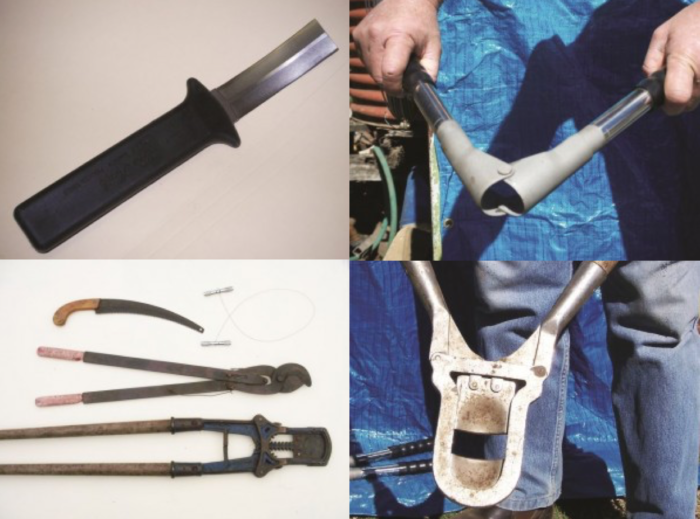
Cows are regularly, legally and painfully mutilated on farms. Before horns which naturally grow out of many cows get too large, and risk damaging the quality of the skins for sale later on, they are removed.
Budding horns are removed with different sorts of knives, as well as with a heated cautery iron.
Sources:
Future Beef
Agriculture Victoria
3 Transport
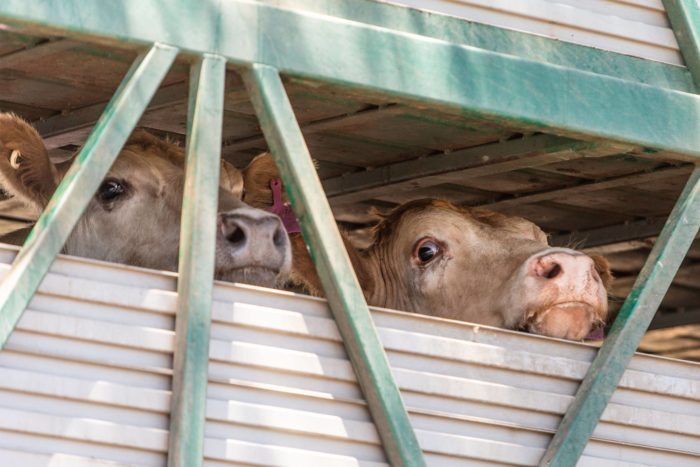
When cows are the weight and age at which farmers choose to kill them, they are forced onto trucks where they are cramped together for hours until they arrive at an abattoir. Cows are denied food and water before their travel to make them easier to move.
4 Stunning

Cows in Australia and many parts of the world must legally be shot in the head with a captive-bolt gun or another weapon before they are bled out.
5 Slaughter
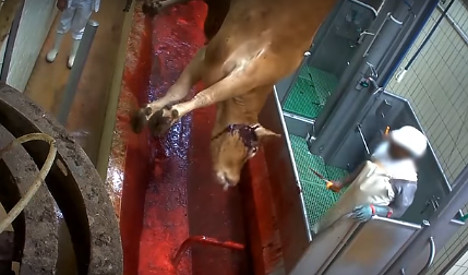
Cows are then bled out, their throats slit open.
6 Skinning
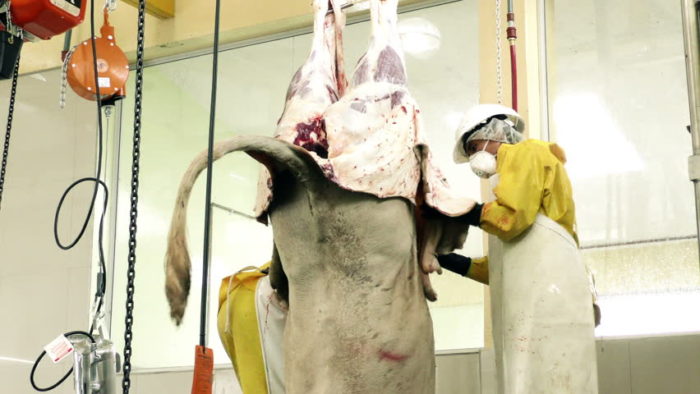
The dead bodies of cows are skinned before they are further processed and dismembered.
Their flesh is used for meat, their skin is used for leather. Their bones and other body parts will be used for other products and ingredients like gelatine and tallow. Each body part sells for a profit.
7 Skins are sent for processing
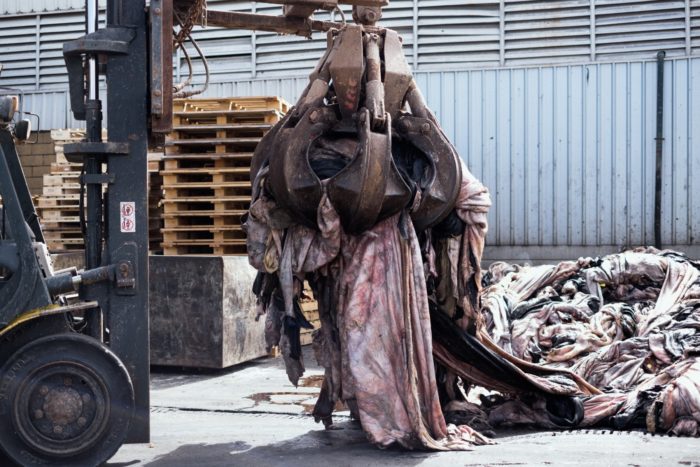
8 Fleshing
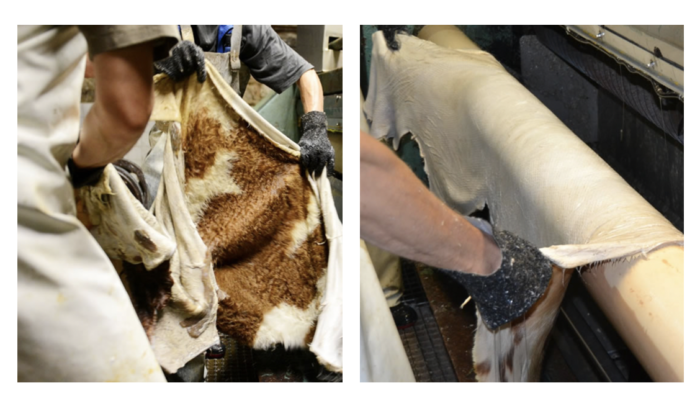
Fat, flesh and grease are removed from the skin.
These fatty materials are sold to the cosmetics industry for use in make-up.
9 Liming

This process is possibly the most important in allowing people to disconnect from the reality that leather is skin: the removal of a cow’s fur from their skin.
10 Tanning processes
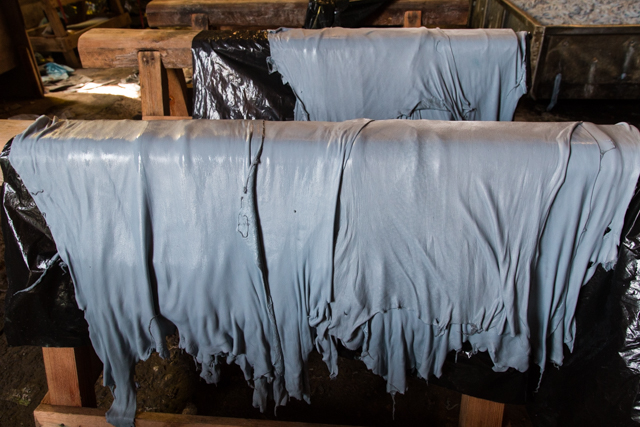
There are many processes involved in tanning raw hides into leather. The most common way of tanning leather is with chromium, among with many other toxic chemicals. Chromium chemicals leave the skins blue.
Many of these chemicals have all been found to be human carcinogens. These chemicals combined have been linked to increased risks of lung, nasal, and sinus cancer, leukaemia, severe dermatitis, liver abnormalities, skin lesions, cardiovascular diseases and increased deaths in young adults.
Sources:
US National Library of Medicine
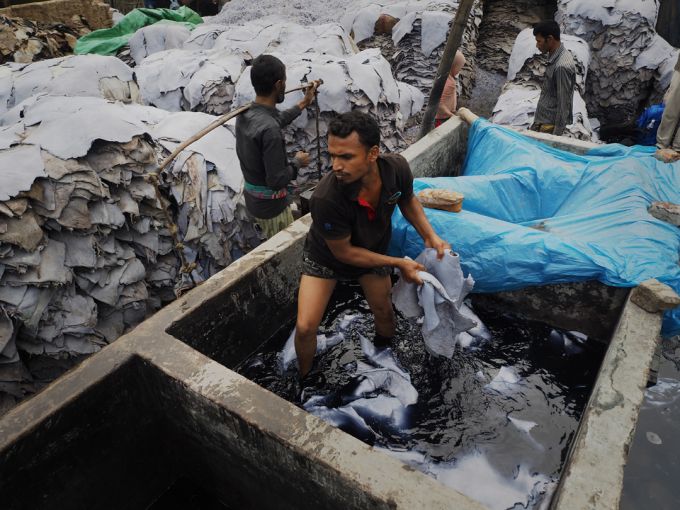
When tanning leather, workers are exposed to these chemicals and their health suffers. Due to heavy water pollution, communities surrounding tanneries are put at risk, too.
In Bangladesh for example, where the tanning of leather is of great economic value, 90% of tannery workers die before the age of 50.
There is very little transparency regarding where leather is tanned.
Sources:
Pulitzer Centre
The Guardian
PBS
11 Finishing and dying
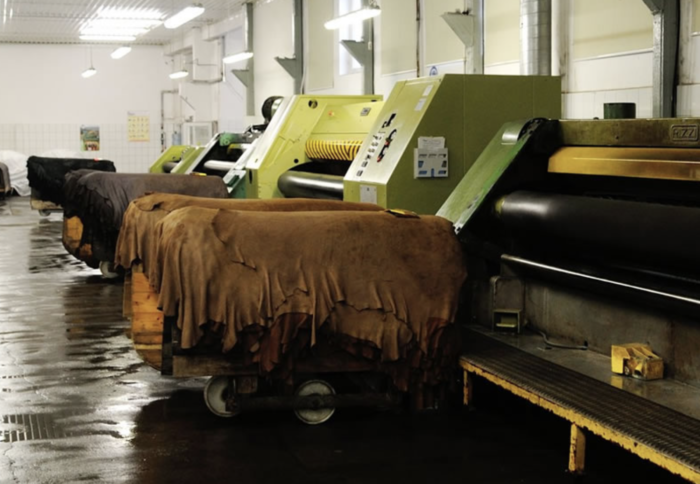
Many processes are involved in finishing leather after the ‘wet blue’ post-tanning stage. These include sammying to remove water content, splitting and shaving the skins to the desired thickness and retannage, where skins are greased and dyed with more chemicals. Finally, the skins are pressed, ironed and treated with primers and colour settings.
When you see what it really is, leather doesn’t look so desirable.
Luckily, there are plenty of materials you can wear instead of an animal’s skin!
Pledge to go leather-free
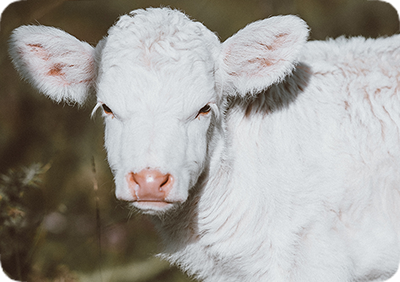
Ethical fashion does not involve paying for the slaughter of animals. By entering a few details below, you can commit to a kinder world and pledge to say 'no' to leather when you shop!
As thanks, we'll send you an e-mail containing discount codes for leather-free products from vegan brands, as well as further information to help you on your way.
Related Articles
-
Shopping Leather Free!
There is no reason to wear someone else's skin now that we can wear an array of vegan materials!
-
17 Reasons To Go Leather Free
Have you ever wondered about the cow who died so people could wear leather shoes, jackets, and bags?
-
Leather Alternative Materials
Materials that don't cost lives, and that are better for the planet!
-
17 Reasons To Wean Yourself from Milk Today
Dairy is scary...
-
Cow Truth
Watch the undercover slaughterhouse investigation.
-
Cows
The myth of a happy farm life and painless death masks a life of misery.